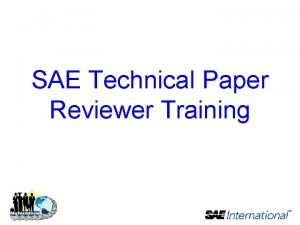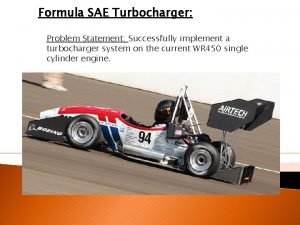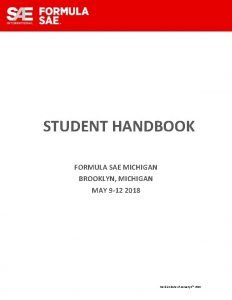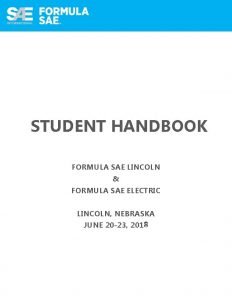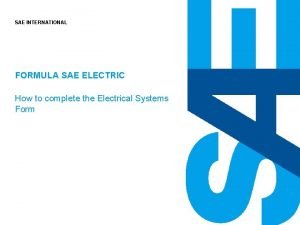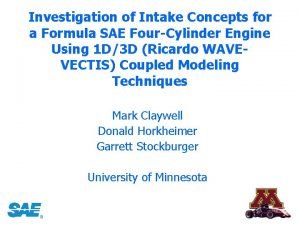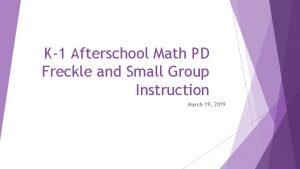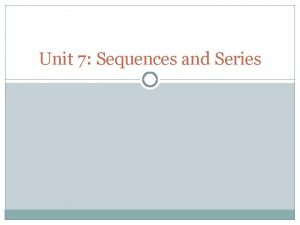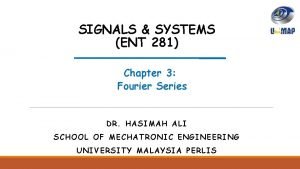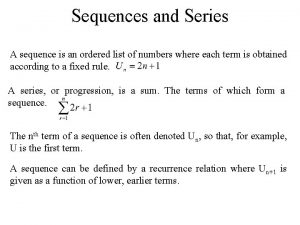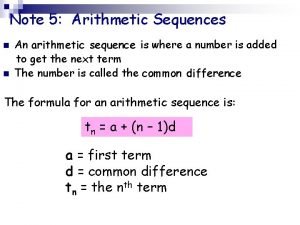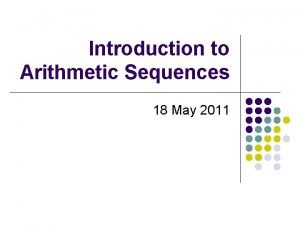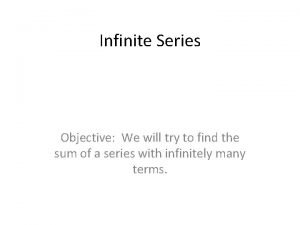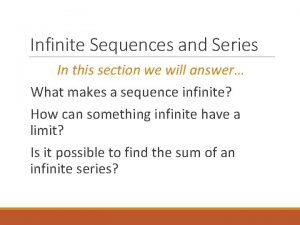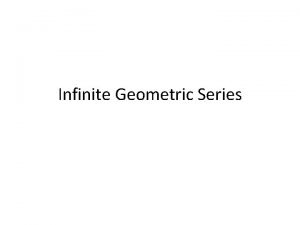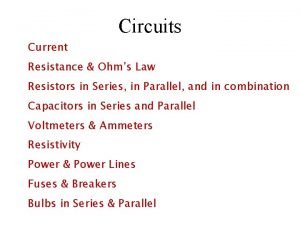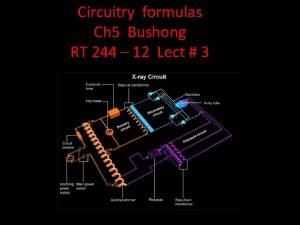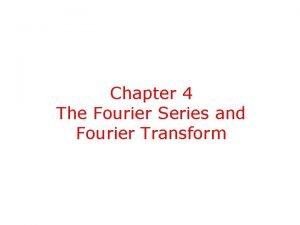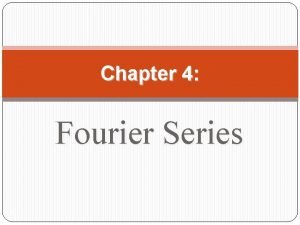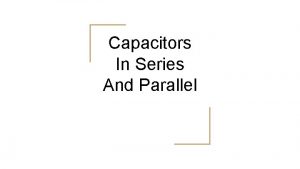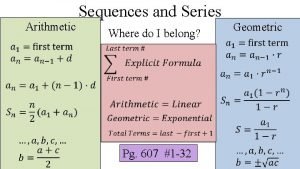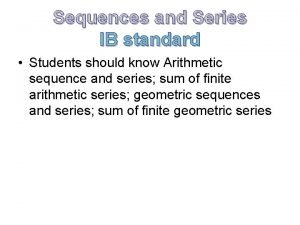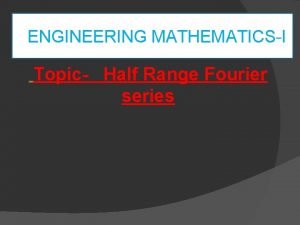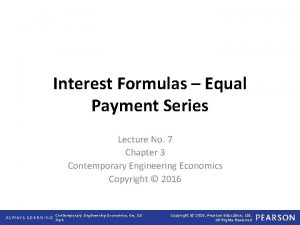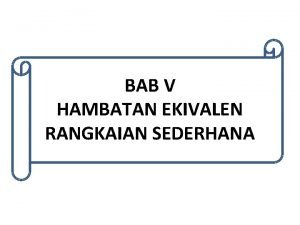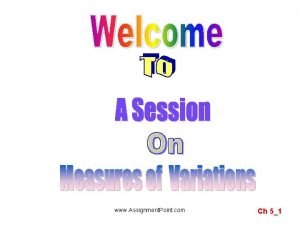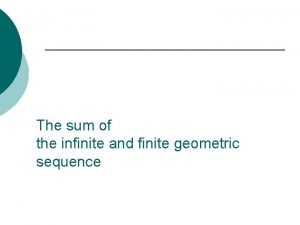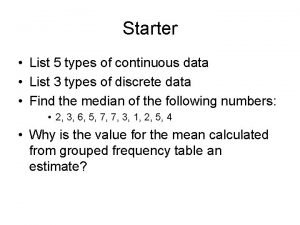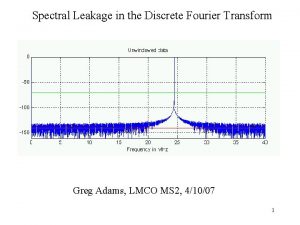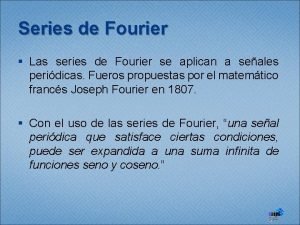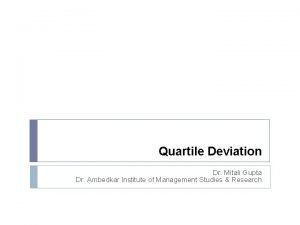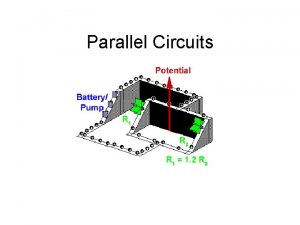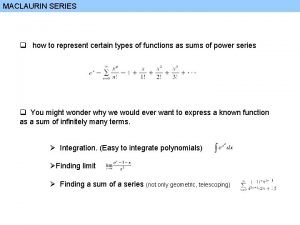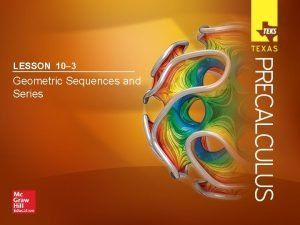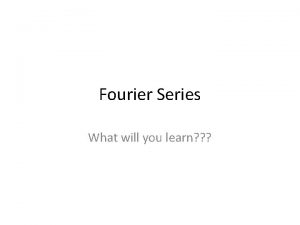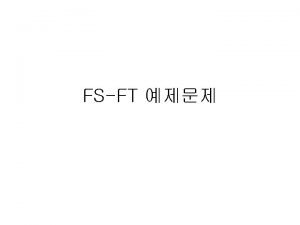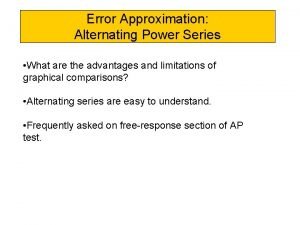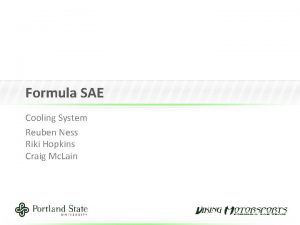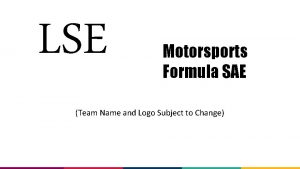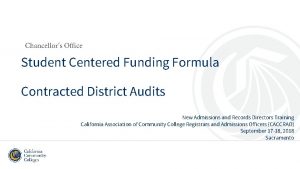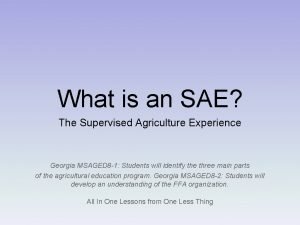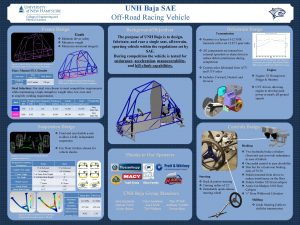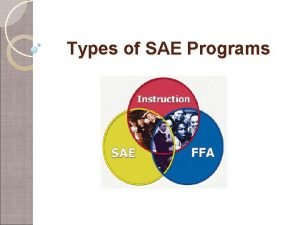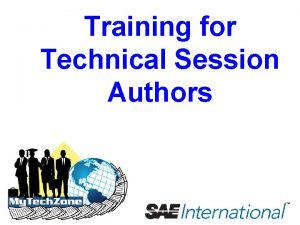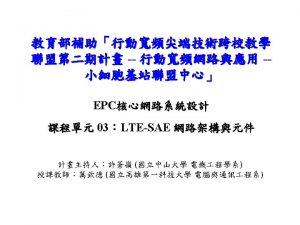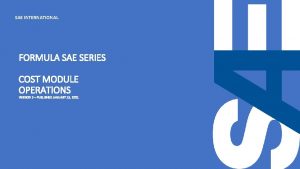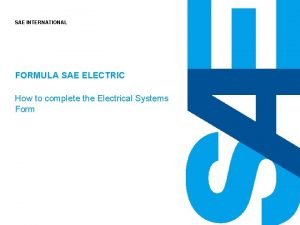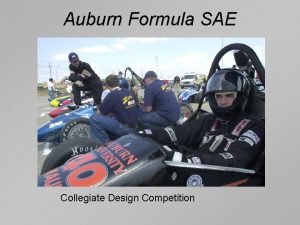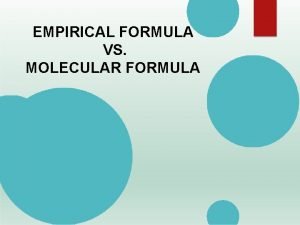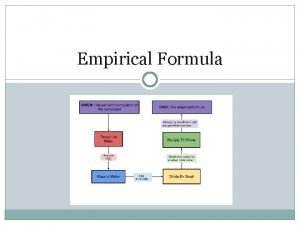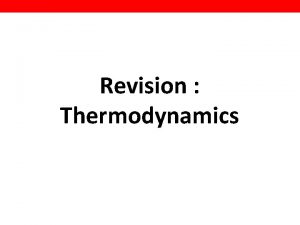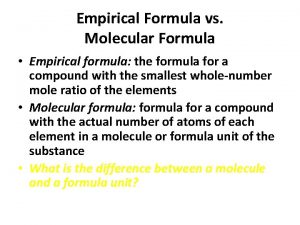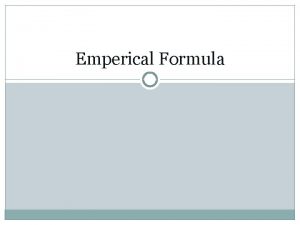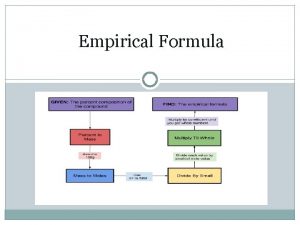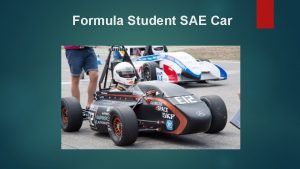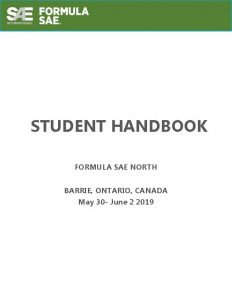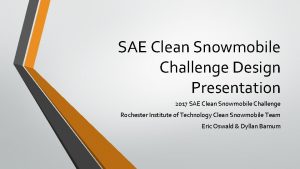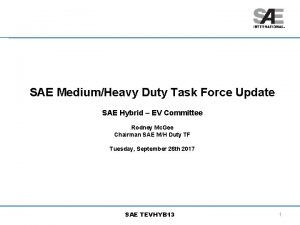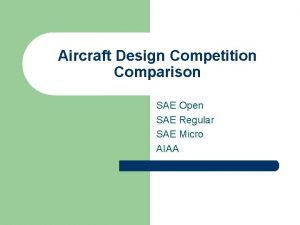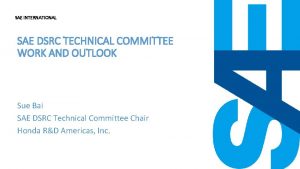1 SAE Australasia Student Series Formula SAE Australasia




































































- Slides: 68

1 SAE Australasia Student Series Formula SAE Australasia 2016 Cost Report Information & Training for Competitors S

2 Presenter Information S Mario Cappola (Ford Motor Company) S FSAE-A – Cost Event Captain (2013 -present) S team Swinburne (2010, 2011) S Drivetrain Engineer (2010, 2011) S Cost Report Manager (2010, 2011) S Norbert Drage (Curtin University) S FSAE-A – Cost Judge (2015 -present) S Curtin Motorsport Team (2012 -2014) S Financial Controller (2014) S Cost Report Coordinator (2013, 2014)

3 Acknowledgements S SAE Australasia S David Ford – SAE Australasia, Ford Motor Company (retired) S SAE Detroit Section S Bill Riley – Space. X, Cornell University S Michael Royce – Albion Associates LLC, Detroit Region SCCA D. Ford B. Riley M. Royce

4 FSAE-A 2016 CR Info & Training S Overview S Further CR Information S General Information S Making vs. Buying S Rules, Tables & Templates S Add Item Requests S Where to Find Cost Materials S List of Published Cost Materials S Cost Report Essentials S The Cost Report Itself S Published S Cost Templates S Cost Report Example S A-Arm Case Study S Part Manufacture S Parts & Tooling

5 FSAE-A 2016 CR Info & Training S At the Competition S In Closing S Addenda S Dos and Don'ts S FSAE-A Cost Event S Questions & Answers S Overall Judging Process S Check-in & Introductions S Visual Inspection - Penalties S Real Case Scenario

6 Cost Event Overview General Information Rules, Tables & Templates Where to Find Cost Materials S

7 General Information “Formula SAE is an automotive-themed engineering design competition; it exists to prepare student engineers for the real world. ” Real world engineering is: S recognising that cost and budgeting are critical in the real world S organising costing data to assist in the decision-making process S making trade-off decisions between functional advantage

8 General Information Cost Event (100 Points) “Real Case” Scenario Cost Report (80 Points) Vehicle Cost (40 Points) (20 Points) Report Accuracy (40 Points)

9 Rules, Tables & Templates S Standardised across all FS/FSAE competitions worldwide S Same baseline rules S Same cost tables S Same part/assembly templates S FSAE-A-specific additions on http: //www. saea. com. au/ S The car design drives final cost S Engineering design is about trade-off analysis

10 Where to Find Cost Materials S FSAE Rules S Standard Tables S Templates S Appendices S Forms http: //goo. gl/zb. Ei. HJ

11 List of Published Cost Materials S FSAE Rules S Cost Event in S 4 (p. 131 2016) S Standard Tables S Materials S Processes S Process Multipliers S Fasteners S Tooling S Add Item Request Form S Templates S Assembly S Part S Appendices S S 1: Cost Models & Methodology S S 2: Standard Part Numbering S S 3: Systems and Assemblies List S S 4: Power Tool Package Envelopes

12 Cost Report Essentials The Report Structure BOM (Bill of Materials) Structure Cost Templates Cost Tables S

13 The Report Hard Copy S 3 - or 4 - ring binder (2 -rings tend to break in transit!) S Spiral/comb binders do NOT count as ring binders!! S Tabs separating each system, clearly labelled S Easy-to-read Table of Contents S Page numbering S Ensure text size is readable for all ages S Ensure legibility of all content – limit excessive background colouring Easy details that are ‘gimme’ marks!!!

14 The Report Soft Copy S Excel Format S One file only S Use templates available from SAE-I AND S PDF Format Electronic copies are important for report validation!

15 Report Structure Suggested ‘Baseline’ for Hard Copy Overall Report: Breakdown per System: S Cover Page S Clearly marked tab! S Table of Contents S System Bill of Material S Supplementary material (as required) S Part number decoding S Blurb/s about manufacturing, etc. S System Costing S Must follow BOM structure S Parts to follow parent assembly S Full Bill of Material S Every system, assembly and part listed S Full costings S System Supplementary Material S Must follow BOM structure, each drawing/photo clearly identifiable by part number and description S All system breakdowns (see right)

16 Report Structure Explanations/Clarity of reports presented varies significantly between teams S Break down each line in the material/process/fastener/tooling sections as much as possible S Covered later in the presentation S Utilise the “use” column as much as possible S Just a few words in each line helps to follow along! When reading down a page, each step should flow in a logical manner

17 BOM Structure S Some teams struggle with a clear BOM breakdown S MUST follow parent “Systems” as specified in Appendix S-3 S Issues present at the assembly level, and cascade down

18 BOM Structure S Suggest using Appendix S-3 assembly list as a ‘baseline’ BOM breakdown S Provides an appropriate level of breakdown at the assembly level S Where an assembly is bundled into one costed elsewhere, DO NOT DELETE THE LINE ITEM! Use description column to direct judge to new location S Some concessions will be made to suit individual vehicle applications

19 BOM Structure Example Only! S Suspension Used as an example (excerpt from S-3 included to the right) S Custom part numbering used, for operator’s clarity, would require ‘decoding’ page at start of report

20 BOM Structure Explanations/Clarity Drawings and other supplementary ‘visual’ materials provide the judge with a method to piece together the car, as they review the material presented to them. In lieu of full engineering drawing/data pack, consider the following: S Parts: 2 D third-angle-projection drawing, dimensioning the overall envelope space and any key features S Assemblies: 3 D exploded-view of assembly, with BOM S Where photo(s) are used, place a ruler with the part/assembly, to give a sense of scale Think of what the judges would need, in order to visualise the part/assembly/system/vehicle coming together in their head when reviewing the report!

21 Cost Report Templates Assembly Template Part Template

22 Cost Tables S S S Materials - the list of purchasable ‘finished parts’ and ‘raw materials’ used by teams to construct the car Process - operations that alter the form of the materials Process Multipliers - modifiers that alter the standard cost of various operations to account for physical differences (i. e. material used, geometric size) Fasteners - various components that are used to fasten components (i. e. bolts, nuts, washers, rivets, hose clamps, safety wire) Tooling - the rigging/infrastructure required for processes to be achievable C o s t T a b l e s Materials Processes Process Multipliers Fasteners Tooling

23 Cost Tables – Materials S General categories: Bearings Brake System Chassis Composite Control Module Controls Damper Drivetrain Electronics Engine EV – CM/Elec/TD Fluid Miscellaneous Raw Material Safety Sensors Springs Steering Tire Wheel S Examples include: S Raw Material – Steel, Aluminium, Titanium S Composite – Carbon Fibre (include material weight!), Foam S Engine – Dry Sump Pump, Overflow Bottle S Control Module – ECU, Datalogger

24 Cost Tables – Process S General categories: Basic Forming Composite Electrical – Attach Wires Electrical – Bundle Install Electrical – Bundle Processing Electrical – Connections Electrical – Layout Electrical – Prep Electrical – Wire in Connector Fasteners Joining Labour Sheet Materials Tubing Material Removal S Examples include: S Basic Forming – Die Casting, Sand Casting, Powder Metal S Composite – Lamination, Oven Cure, Autoclave Cure S Joining – Sewing, Welding S Material Removal – Turning, Milling, Facing, EDM

25 Cost Tables – Process Multipliers S General categories: Assembly Fastener Installation Drill, Tap Machining S Examples include: S Assembly – Length, Disassemble S Fastener Installation – Engagement Length S Drill, Tap – Hole Length S Machining – Material Type (e. g. Foam is easier to machine than Aluminium, therefore 0. 33 x multiplication factor)

26 Cost Tables – Fasteners S General categories: Bolts Dzus Fasteners Hose Clamps Loop Straps Nuts Pins Retaining Rings Studs Washers S Points to note: S Many fasteners are equation-driven S Only required for components on the vehicle, not for fixtures/jigging

27 Further CR Information Making vs. Buying Add Item Requests S

28 Making vs. Buying S Car components are classified as either purchased or made S Bought parts appear in tables S Typically organised by: 1) part type, 2) manufacturer, and 3) model S Can be modified as the team requires S Made parts can appear in tables S Parts designated as ‘Student Built’ must be ‘made’ S Unlisted parts must be ‘made’

29 Making vs. Buying Made Parts S Start as raw materials (Steel, Alloy; Aluminium, Normal; Iron; etc. ) S Undergo various processes (Machining; Spinning, Metal; Tube cut; etc. ) S May require subassembly (Assemble, 1 kg, Loose; Weld; Hand - Start Only) S Examples: oil tank, uprights, A- arms Bought Parts S Purchased in ready state S *Can* be modified as per team requirements S Examples: suspension dampers, engine control units, brake master cylinders

30 Rule Covering ‘Made vs. Bought’ How Team Actually Acquired the Part How Cost Table Lists Part Team Made Team Bought Table lists the part as “Made”, or the part is not listed in the Tables Cost as “Made” Table lists the part as “Bought” 1) “Made” option is NOT in table; cost as “Bought” 2) “Made” option is in Cost as “Bought” table; team can choose either “Bought 2016 Formula SAE Rules, S 4. 13. 3 (p. 138)

31 Add Item Requests S Non-existent items that teams want to see in future cost tables S Details in ‘Add Item Request Online’ on fsaeonline. com S Past AIR viewable in ‘Master Table/Committee Decision’ S Use the ‘Excel format AIR’ and e-mail to formulasae@saea. com. au S Don’t forget to provide the

32 Add Item Requests

33 Cost Report Example A-Arm Case Study Part Manufacture Parts & Tooling S

34 Introduction A-Arm Case Study This example covers • Individual Part Manufacture • • Assembly Manufacture Fasteners & Tooling Based on the example created by Bill Riley (mentioned at the start of the presentation)

35 Cost Report Example Part Manufacture S Example in case is the spherical bearing cup S Manufactured from steel round bar S *ALL* processes to be stepped

36 Cost Report Example Part Manufacture Process Steps Working from initial steel round bar S Rough machine outside S Finish machine outside S Rough machine inside S Finish machine inside S Part material from round bar Visualisation

37 Cost Report Example Part Manufacture Parting Cut 3. 0 mm

38 Cost Report Example Part Manufacture Part Cost Design/Process Rev. Level (Optional) Material Process Fastener Tooling S u b t o t a l s

39 Cost Report Example Part Manufacture

40 Cost Report Example Part Manufacture Missing Steel Multiplier

41 Cost Report Example Part Manufacture No Parting Operation Missing Steel Multiplier

42 Cost Report Example Part Manufacture No Machining – Install/Setup/Remov e No Parting Operation Missing Steel Multiplier

43 Cost Report Example Parts & Tooling Part Layout Assembly Components 8 3 1 7 4 S Leg 2 Tube Inserts (machined & tapped) 2 6 Leg 1 Tube S 3 5 S 8 S Spherical Bearing Cup S Sheet Metal Gusset S Spherical Bearing S C-clip-type Retaining Ring S Rod End w/Jam Nut

44 Cost Report Example Parts & Tooling Part Layout Cost Report 8 3 1 3 2 5 6 7 4 8

45 Cost Report Example Parts & Tooling Part Layout Part Report – Materials 8 3 1 1 3 5 3 2 5 6 7 4 8 2 3 4

46 Cost Report Example Parts & Tooling Part Layout Part Report – Processes 8 3 3 1 5 1 2 3 2 5 6 7 4 8 4 1 3 1 4 2 3 2 4 5

47 Cost Report Example Parts & Tooling Part Report – Fasteners/Tooling Part Layout 8 8 3 1 8 10 3 2 5 6 7 4 6 7 10 8

48 Cost Report Example Parts & Tooling Part Report – Fasteners/Tooling Part Layout 1 5 2 4 3

49 Cost Report Example 8 3 1 3 2 5 6 7 4 Part is complete, removed from fixture, but not yet installed onto the vehicle 8

50 Cost Report Example Parts & Tooling Completed Part Subassembly Report

51 Cost Report Example Parts & Tooling Completed Part Errors in the Costed Part S Jam nuts do not include installation steps S Hand – Start Only S Hand, Loose <=25. 4 mm S Ratchet <=6. 35 mm S Bearing cup and threaded inserts require setup costs for the machining operations S Machining Setup, Install and remove

52 Cost Report Example Parts & Tooling Completed Part Review Points S Are the materials, processes, multipliers, tooling, etc. correct? S Were any elements forgotten? S What assumptions have been made? S Do we have these written down to backup/explain the flow? S Can any further evidence (visual or otherwise) complement our work? S Engineering drawings, photos, sketches

53 At the Competition Addenda FSAE-A Cost Event Overall Judging Process Check-in & Introductions Visual Inspection - Penalties Real Case Scenario S

54 Addenda to the report can be taken into consideration to cover any necessary changes made to the car. These addenda: S MUST be logged in at the same time as the team’s event registration S DO NOT SUBMIT at time of judging!!! S MUST be in the format prescribed by the rules (Appendix S-5) S MUST have supporting evidence for all amended costs, attached Judges reserve the right to refuse any addenda which do not comply with the terms above.

55 Addenda Key considerations: S Items added to the Cost Report via addenda will be costed at 1. 25 times the tabulated cost S Items removed from the Cost Report via addenda will be credited at 0. 75 times the tabulated cost S Judges will make the above calculations as required, after net cost change being verified at the event (Visual Inspection)

56 FSAE-A Cost Event Overall Judging Process 25 - 30 minutes Check-in & Introductions Visual Inspection Real Case Scenario

57 FSAE-A Cost Event Check-in & Introductions Duration – 5 minutes Introduce the team and the car, mentioning any noteworthy features that may be of interest to the judges in the following areas: S Trade-offs between content and cost based on performance of parts/assemblies S Design for Manufacture and Assembly S Lean Manufacturing S Minimum Constraint Design S Any other special actions taken affecting the Cost Report The introduction should only cover key notes; consider this an ‘ice breaker’ activity

58 FSAE-A Cost Event Visual Inspection Duration – 10 minutes The judges have reviewed the submitted cost report prior to the event S S Any issues and/or feedback for the teams will be presented at this point This review is done to make sure that parts on the vehicle are correlate with the cost report and that nothing has been added or changed since the cost report's publication Key considerations: S The quality in which you conduct yourself and respond to questions counts. Be professional! S Use the Cost Report as submitted to SAE-A S S Will be provisionally provided by the judges for the Visual Inspection, before being returned on a permanent basis on Saturday/Sunday Be open to feedback and discussion on areas for improvement

59 FSAE-A Cost Event Visual Inspection S The secret is to know your cost report and your car well S Treat this as a explanation/justification exercise S Avoid flicking between pages!! S Practice before the event if necessary! “So it is said if you know the tables and know your car, you will do well in Cost. If you know your car, but not the tables, you may or may not do well. If you know neither your car nor the tables, you will do quite badly. ” Adapted from Sun Tzu’s ‘The Art of War’

60 FSAE-A Cost Event Visual Inspection - Penalties S Penalties regarding report ‘errors’ are not applied until after they are verified at the visual inspection S Two methods to calculate penalties S Fixed Point S Adjusted Cost S No penalty applied when values are over-estimated S Self-penalising! S Correlation between report and the vehicle presented is also considered outside of the penalty process

61 FSAE-A Cost Event Visual Inspection - Penalties FIXED POINT PENALTIES: S Points deducted from Accuracy score S Most penalties will be of the Fixed Point persuasion Examples: Description Missing/Inaccurate Material, Process, Fastener, Tooling Penalty Value 1 point each Missing/Inaccurate Part 3 points each Missing/Inaccurate Assembly 5 points each

62 FSAE-A Cost Event Visual Inspection - Penalties ADJUSTED COST PENALTIES: S An adjusted ‘penalty’ cost added to total cost of vehicle S Used where the Fixed Point Penalty would not penalise teams enough for missing bigger items S i. e. Teams are actively discouraged from ‘forgetting’ whole assemblies and systems, copping a fixed point penalty S Where a table cost cannot be determined in a timely manner, a judge may use the table cost of a similar vehicle into the penalty formula Formula:

63 FSAE-A Cost Event Real Case Scenario Duration – 10 minutes Students are to respond to a challenge relating to the cost and/or manufacture of the car. The challenge will be advised in the lead up to the event via email to team leaders and a copy uploaded to the SAE-A website. Key considerations: S Weighted trade-off tables are often a powerful tool to choose between design proposals S Consider the flow-on effects to interacting parts/assemblies S Consider the flow-on effects of vehicle attributes as a result of the change S S Marketability Performance – subjective & objective S The final recommendation from this task may not be the same as what is fitted to the vehicle at competition – there is no ‘right’ or ‘wrong’ answer S Use as many (realistic) assumptions as required, to right-size the amount of effort to complete the task

64 FSAE-A Cost Event Real Case Scenario Note S The Real Case Scenario is not a discretionary low-value activity S It should be regarded as an integral and major part of the event S It is an opportunity for teams to demonstrate their critical thinking abilities and approach to cost minimisation or other special activity Additionally, it provides an insight to real problems you’ll

65 In Closing Dos and Don'ts Questions & Answers S

66 Dos and Don’ts DO DON’T S Consider the legibility of the report S Lose track of submission deadlines S Know the published materials (rules, S Use comb binders! supp. regs. , cost tables, templates) S Break down every step as far as possible S Consider your BOM breakdown and how it cascades at each step S Include as many supplementary ‘visual’ aids as possible S Submit addenda at on-site S Oversimplify steps in part/assembly breakdown S Forget to use Process Multipliers, Machining Install/Remove, etc.

67 And Last But Not Least DO START EARLY! There is *BARELY* enough time for cost report if you start early!

68 SAE Australasia Student Series Questions & Answers
 Fsaea
Fsaea Sae my tech zone
Sae my tech zone Maclaurin series vs taylor series
Maclaurin series vs taylor series Balmer series lyman series
Balmer series lyman series Taylor vs maclaurin
Taylor vs maclaurin Taylor series lesson
Taylor series lesson Ibm p series
Ibm p series Amplifier feedback topologies
Amplifier feedback topologies Series aiding and series opposing
Series aiding and series opposing Arithmetic sum formula
Arithmetic sum formula Problem statement formula
Problem statement formula Formula sae michigan
Formula sae michigan Formula near me
Formula near me Formula sae electric
Formula sae electric Formula sae
Formula sae How did you...your last weekend
How did you...your last weekend We ...... a big piece of wood last saturday. (see)
We ...... a big piece of wood last saturday. (see) National clearinghouse student tracker
National clearinghouse student tracker Class maths student student1 class student string name
Class maths student student1 class student string name National student clearinghouse student tracker
National student clearinghouse student tracker Https://student.freckle.com/#/login
Https://student.freckle.com/#/login Good morning, students.
Good morning, students. Sls reset password
Sls reset password Nth term of ap
Nth term of ap Fourier series integral
Fourier series integral Sequences and series
Sequences and series Arithmetic sequence formula
Arithmetic sequence formula Arithmetic series
Arithmetic series Summation of harmonic series
Summation of harmonic series Formula for infinite geometric series
Formula for infinite geometric series Infinite geometric series
Infinite geometric series Homologous family
Homologous family What is ohm's law solved for current? i = v/r v= i/r r= i/v
What is ohm's law solved for current? i = v/r v= i/r r= i/v X ray circuit diagram
X ray circuit diagram Duality of fourier transform
Duality of fourier transform Fourier series
Fourier series Capacitors series parallel
Capacitors series parallel Geometric series formula
Geometric series formula Arithmetic progression
Arithmetic progression Geometric sequence equation
Geometric sequence equation Sum of geometric series formula
Sum of geometric series formula Geometric and arithmetic sequences
Geometric and arithmetic sequences Nonene
Nonene Half range fourier series is defined in
Half range fourier series is defined in 5 formula
5 formula Equivalent parallel resistance
Equivalent parallel resistance Assumed mean formula
Assumed mean formula Finite vs infinite geometric series
Finite vs infinite geometric series Continuous data
Continuous data Dft table
Dft table Formula series de fourier
Formula series de fourier How to calculate quartile deviation
How to calculate quartile deviation Types of circuits
Types of circuits Mclauren series
Mclauren series Recursive formula for geometric sequence
Recursive formula for geometric sequence Formula of mean for grouped data
Formula of mean for grouped data Half range cosine series formula
Half range cosine series formula Fourier series formula
Fourier series formula Power swries
Power swries Fsae cooling system
Fsae cooling system Sae lse
Sae lse Scff extranet
Scff extranet What is an sae?
What is an sae? Unh sae
Unh sae Improvement sae examples
Improvement sae examples Exploratory sae
Exploratory sae My sae techzone
My sae techzone Sae epc
Sae epc Sae j 2579
Sae j 2579

